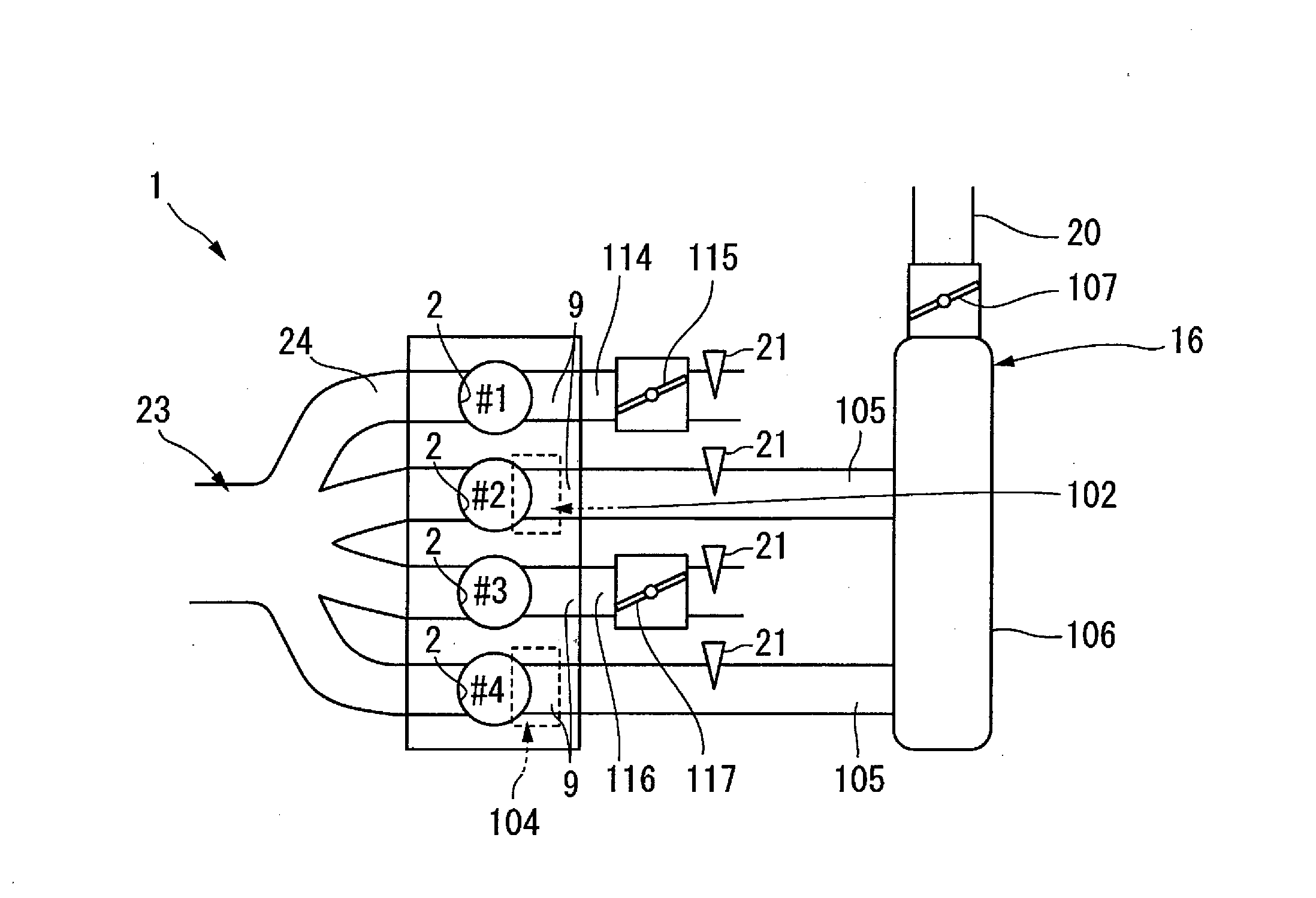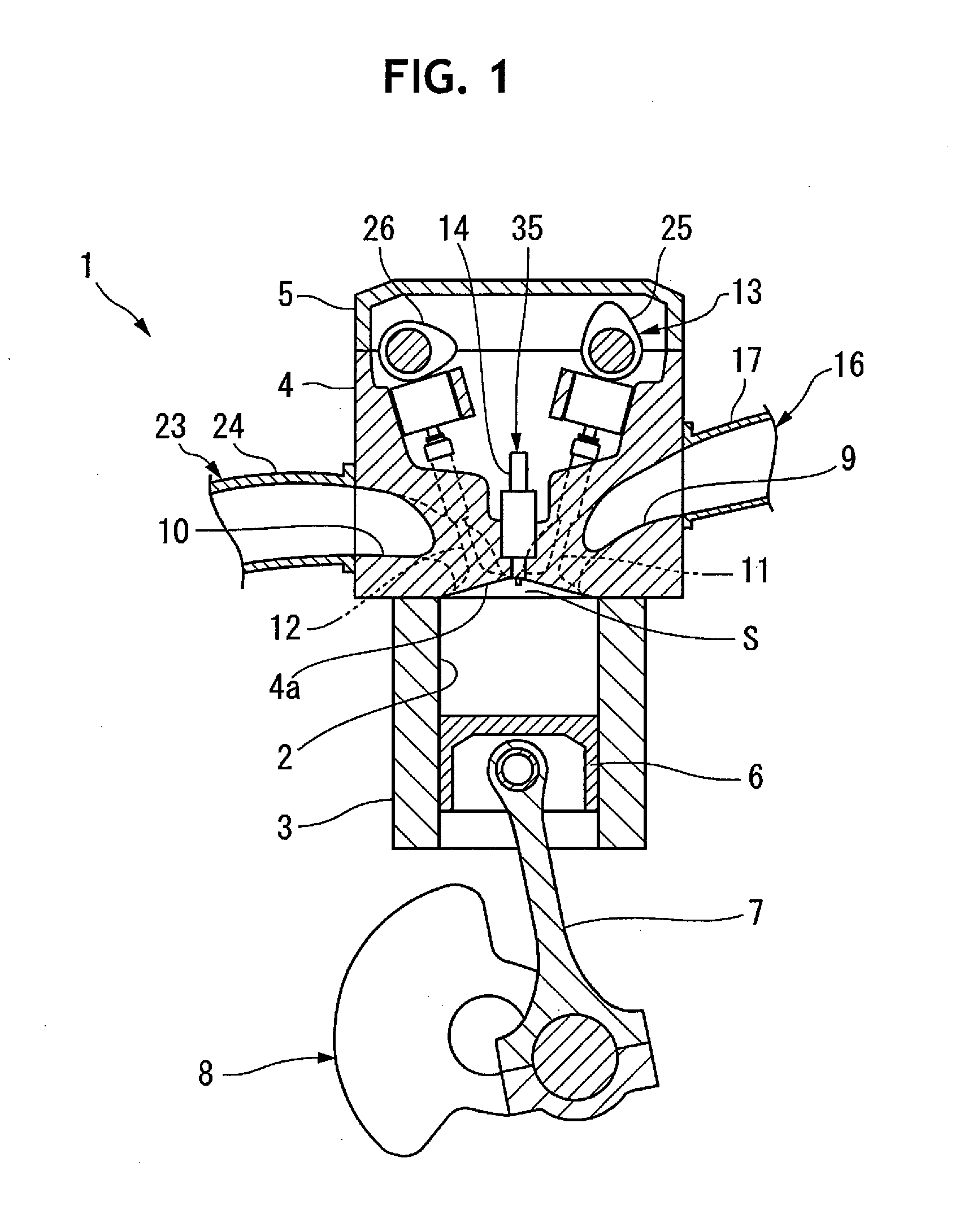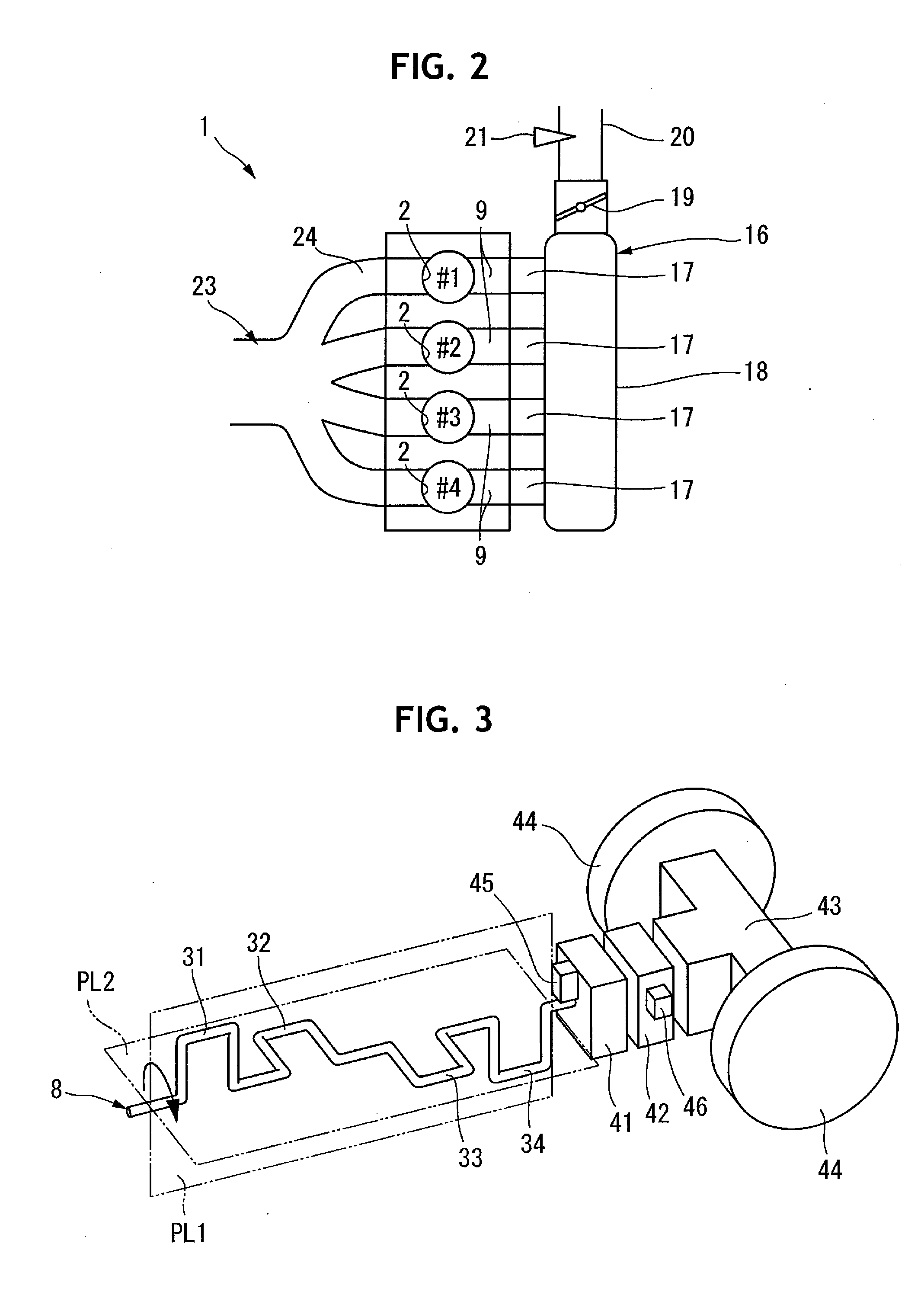Four-cylinder engine and method of operating four-cylinder engine
a four-cylinder engine and engine technology, applied in the direction of electric control, ignition automatic control, combustion air/fuel air treatment, etc., can solve the problems of non-uniform driving energy per unit time, and discomfort of the occupant of the vehicle equipped with the engine of this kind
- Summary
- Abstract
- Description
- Claims
- Application Information
AI Technical Summary
Benefits of technology
Problems solved by technology
Method used
Image
Examples
first preferred embodiment
[0049]A first preferred embodiment of a four-cylinder engine and a method of operating the four-cylinder engine will be explained in detail below with reference to FIGS. 1 to 9.
[0050]A four-cylinder engine 1 shown in FIG. 1 preferably is a 4-stroke inline four-cylinder engine or 4-stroke parallel four-cylinder engine to be mounted in a vehicle (not shown), for example. FIG. 1 depicts only the main constituent elements of the four-cylinder engine 1. As shown in FIG. 1, the four-cylinder engine 1 includes a cylinder body 3 including four cylinder holes 2, a cylinder head 4 attached to the cylinder body 3, and a head cover 5 attached to the cylinder head 4.
[0051]As shown in FIG. 2, the four cylinder holes 2 are provided in the cylinder body 3 to extend along a line in the radial direction. The four-cylinder engine includes first to fourth cylinders including the four cylinder holes 2. In FIG. 2, reference symbols #1, #2, #3, and #4 respectively denote the first, second, third, and four...
second preferred embodiment
[0094]As shown in FIGS. 10 to 13, the indicated mean effective pressures of two cylinders having an explosion interval of 90° may also be decreased by using an intake device. The same reference numerals as in FIGS. 1 to 9 denote the same or similar members in FIGS. 10 to 13, and a detailed explanation thereof will properly be omitted.
[0095]The differences of a four-cylinder engine 1 shown in FIG. 10 from the four-cylinder engine when using the first preferred embodiment shown in FIGS. 1 to 9 are the configuration of an ignition system and an intake device 16, and the rest of the arrangements are the same. As will be described below, the ignition system of the four-cylinder engine 1 according to the present preferred embodiment improves or optimizes the ignition timings of all cylinders by producing differences between the intake air volumes of the cylinders. The present preferred embodiment does not perform retard control as explained in the above-described first preferred embodimen...
third preferred embodiment
[0114]As shown in FIGS. 16 to 19, the indicated mean effective pressures of two cylinders having an explosion interval of 90° may be decreased by using an intake device. The same reference numerals as in FIGS. 1 to 15 denote the same or similar members in FIGS. 16 to 19, and a detailed explanation thereof will properly be omitted.
[0115]The differences of a four-cylinder engine 1 shown in FIG. 16 from the four-cylinder engine when using the first preferred embodiment shown in FIGS. 1 to 9 are the configuration of an ignition system and an intake device 16, and the rest of the arrangements are the same. The ignition system of the four-cylinder engine 1 according to the present preferred embodiment improves or optimizes the ignition timings of all cylinders. In the present preferred embodiment, retard control as explained in the above-described first preferred embodiment is not performed.
[0116]The intake device 16 of the four-cylinder engine 1 shown in FIG. 16 includes a first intake d...
PUM
 Login to View More
Login to View More Abstract
Description
Claims
Application Information
 Login to View More
Login to View More - R&D
- Intellectual Property
- Life Sciences
- Materials
- Tech Scout
- Unparalleled Data Quality
- Higher Quality Content
- 60% Fewer Hallucinations
Browse by: Latest US Patents, China's latest patents, Technical Efficacy Thesaurus, Application Domain, Technology Topic, Popular Technical Reports.
© 2025 PatSnap. All rights reserved.Legal|Privacy policy|Modern Slavery Act Transparency Statement|Sitemap|About US| Contact US: help@patsnap.com



